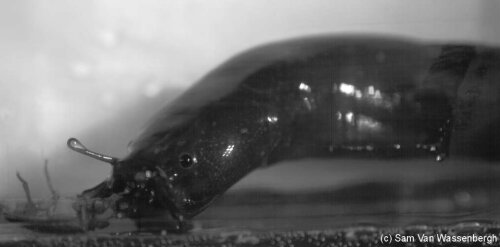Catfish strikes on land
An important step towards our understanding of the evolution of terrestriality in vertebrates is to identify how the aquatic ancestors of tetrapods were able to exploit terrestrial prey resources. We discovered that the eel-catfish (Channallabes apus), an inhabitant of the muddy swamps of tropical Africa, possesses the remarkable ability to forage and capture prey on land. The animal’s capacity to bend the head down towards the substrate while feeding terrestrially appears to be an essential feature for fishes to make the transition from an aquatic to a terrestrial feeding mode.

Van Wassenbergh S., Herrel A., Adriaens, D., Huysentruyt S., Devaere S. and Aerts P. (2006). A catfish that can strike its prey on land. Nature 440, 881.
- full text pdf
- full text html at Nature.com (subscription required)
- supplementary methods and videos at Nature.com (free)
press coverage:
- De morgen (BE)
- De Standaard (BE)
- Gazet Van Antwerpen (BE)
- Het Laatste Nieuws (BE)
- EOS (BE)
- Metro (BE)
- Kamagurka (BE)
- VPRO (NL)
- BBC NEWS (UK)
- Berliner Zeitung (DE)
- Spiegel Online (DE)
- ORF.at (AT)
- 20 Minuten (CH)
- Tiede (FI)
- Elementy.ru (RU)
- Membrana (RU)
- New York Times (USA)
- Fox News (USA)
- NPR (USA)
- National Geographic (USA)
- Dajiyuan (CHINA)
- Wild Singapore (SINGAPORE)